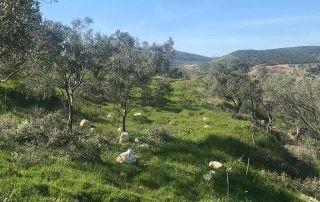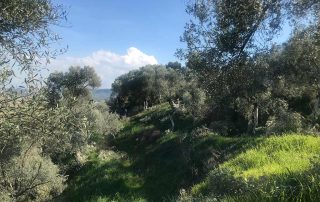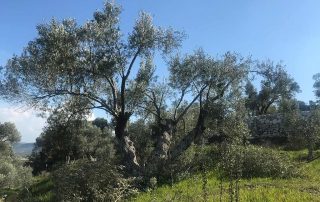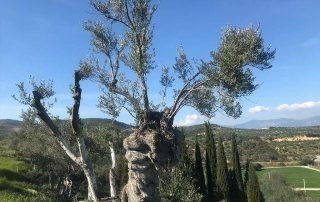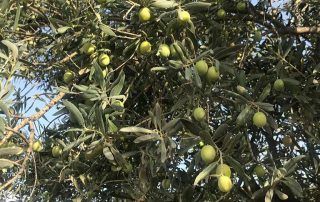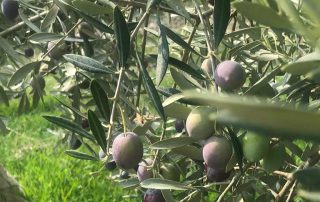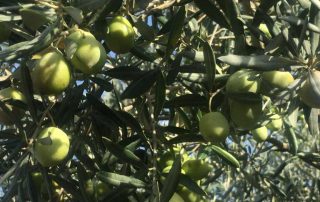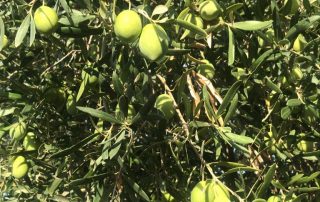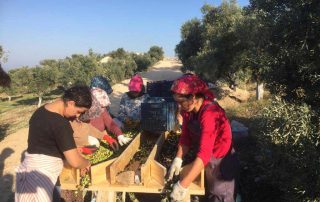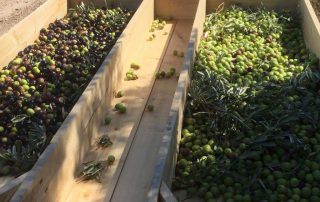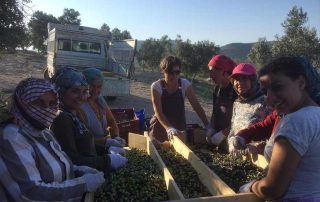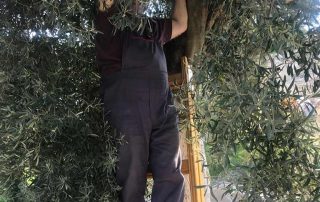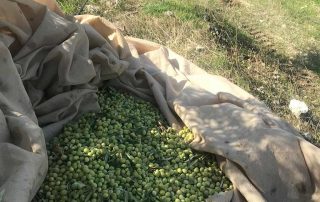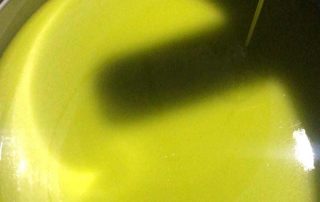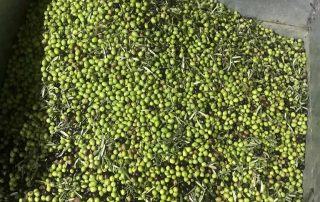Olive varieties
The olive tree is a Mediterranean plant that was cultivated as a useful plant around 4000 BC. On the mountains of Aegean Turkey grow freely and naturally olive trees, which the Turks call “Delice”; in English “the wild one”. Unlike mechanically cultivated olive groves, which are often monocultural, on the Mount of Olives Miletus you can find different varieties of olives that thrive side by side and produce amazingly different olive oils. Organic, sustainable and natural cultivation are the basis of all our bio premium olive oils.
Memecik – the cultivated savage
The South Aegean olive variety Memecik is cultivated on Delice`s trunks. Memecik is therefore a “cultivated wild”, whose asymmetrical oval olive shape with the distinctive fruit tip is unmistakable. It is the queen of Miletus and has been cultivated in the South Aegean for over 2000 years. So it is very likely that even Thales enjoyed plenty of olives of the Memecik variety.
Most of the olive trees of our Mount of Olives Miletus are Memecik trees surrounded by colorful herbaceous meadows, figs, basil, caper plants, wild asparagus and thyme bushes. Biodiversity, sustainability and healthy flora and fauna with plenty of space for wildlife, birds and insects are very important to us. What counts is not the maximum yield but a healthy and sustainable management of our olive grove.
With our early harvested, cold pressed and pure Memecik variety we present an intensely fruity olive oil, which smells clearly aromatic of freshly cut grass and of all the herbs of the mountain in the nose and announces itself on the palate and in the throat with 399,5 mg/kg polyphenol by a healthy sharpness. The acidity is particularly low at 0.24 %.
Gemlik – the North Aegean
About 20% of our olive trees are Gemlik olives. This fleshy and small-seeded olive variety is originally native to the Turkish North Aegean or Marmara region and named after the port city of Gemlik on the Sea of Marmara. It has acclimatized wonderfully on the Mount of Olives, Miletus. The well-known black shiny Turkish table olives are mostly Gemlik olives. They are harvested then late, ripe and dark, and are indispensable for a classic Turkish breakfast with feta cheese, cucumber and tomatoes. We wouldn’t be Milesians if we didn’t try other ways with our gemliks. That’s exactly what we did. We harvested them green, that is early, by hand and cold pressed them every day barely 2 hours after harvesting. This oil, with its acidity of 0.18 %, has become an excellent, intensely fruity olive oil. It smells of grass and herbs of the Mount of Olives and leaves a balanced bitterness on the palate and in the throat. Its polyphenol content is 401,6 mg/kg, which makes it very healthy and digestible.
Aegean Blend – the composed variety
Our grove is not a monocultural garden. We have a diversity of varieties that have the “task” to fertilize. The diversity enriches them in polyphenol and flavors while immunizing them against pests. Our new premium olive oil in our Ölberg Milet family is a lyrical tribute to the diversity of the Aegean essence. That is why we have named it “Aegean Blend – the composed variety”.
This exceptional olea cuvée from Turkey’s South Aegean is made from four olive varieties: “Kara Zeytin”, also known as Kalamata, “Susam”, the small polyphenol-rich oil olive of the Miletus area, “Delice”, the little wild olive and a bit of “Memecik” – all four harvested early and cold pressed immediately. Together they bring it this season to an excellent 497,4 mg/kg polyphenol, the acidity of 0.27 % is again very low.
Harvest
Pressing
For the quality of the oil, pressing the harvested olives as soon as possible is crucial and decisive for the low content of free fatty acids. We press directly at the end of a harvest day. We are fortunate that our transport route to the press is extremely short, only 700 meters.
At Zeytinseli, our neighbors, one of the best eco-certified olive presses in Turkey is operated, which cold extracts the oil from the olives under maximum exclusion of oxygen in the process. First, the olives are freed from any remaining branches and leaves, washed and crushed into a moist paste. This is then kneaded for a relatively long time until it reaches the ideal consistency to extract the oil by centrifugal force. Our fresh oil then flows out of the plant glowing green – always a very emotional moment that we have waited and worked towards for a whole year.
Of course, we immediately taste the new oil and have a first acid measurement carried out in the laboratory, which is located right next to the hall. This is the 2nd highly exciting moment. Now we can see how carefully we and our team have proceeded with the harvest and how well our olives have been cared for over the year.
Impressions

